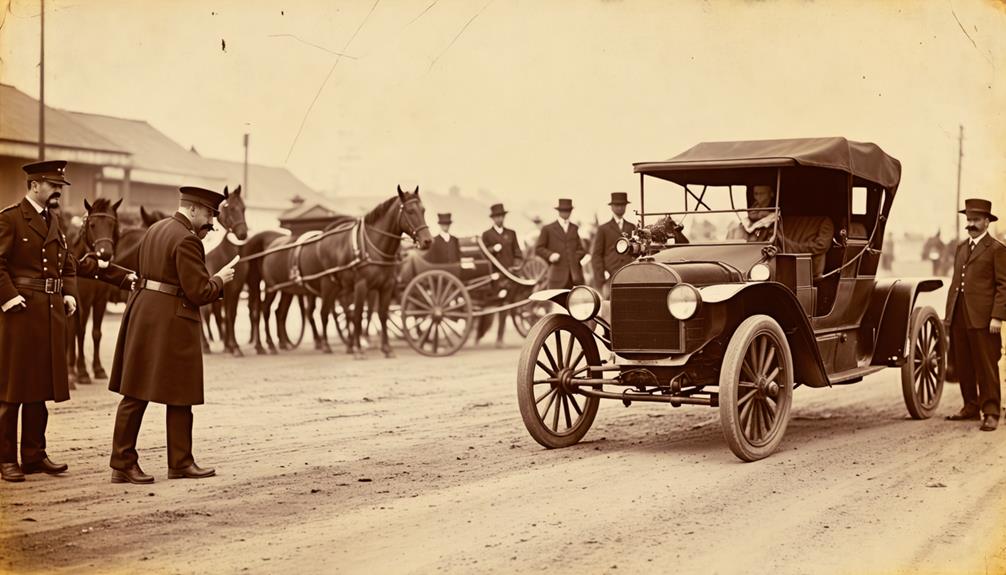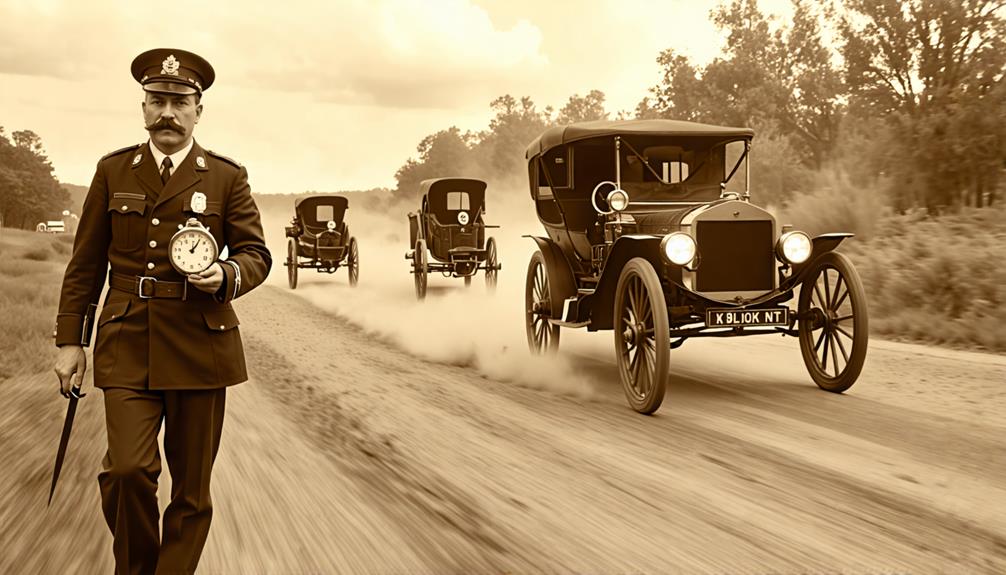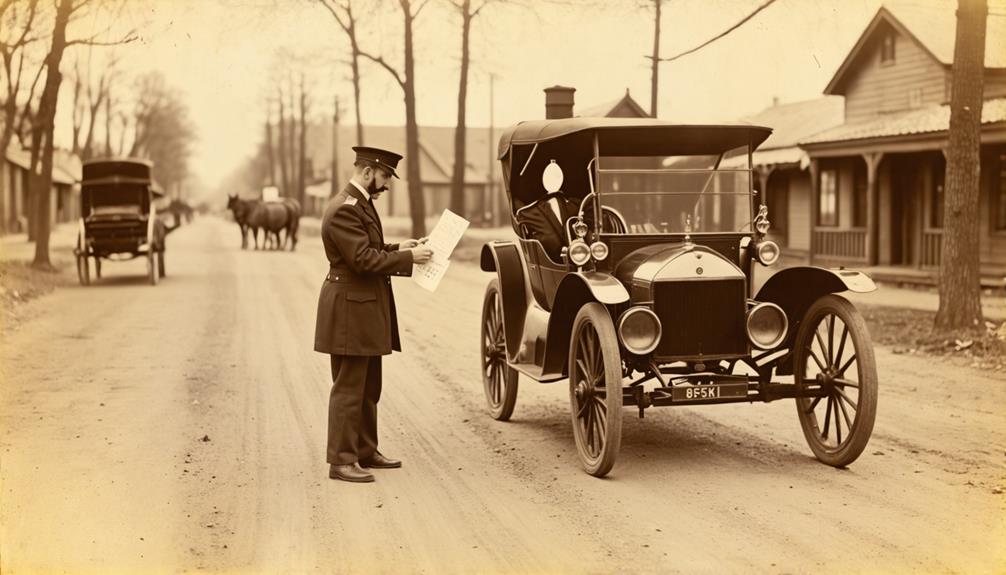You might think that today's speed limits are restrictive, but imagine living in a time when driving at 8 mph was considered reckless. That's exactly what happened to Walter Arnold in 1896 when he received the world's first speeding ticket. It's hard to fathom a world where a bicycle-riding police officer could catch up to a speeding car, yet that's precisely how this historic citation was issued. This incident not only marked a milestone in traffic law enforcement but also set the stage for the complex speed regulations we navigate today. What other surprising facts about early motoring await?
Key Takeaways
- Walter Arnold received the world's first speeding ticket in January 1896 in Paddock Wood, Kent, UK.
- Arnold was driving at 8 miles per hour, four times the legal speed limit of 2 mph.
- A police officer pursued Arnold for five miles on a bicycle to issue the ticket.
- The fine for this first speeding offense was 4 shillings and 7 pence, equivalent to about £260 today.
The Historic Speeding Incident

On a chilly January day in 1896, Walter Arnold made history by receiving the world's first speeding ticket, setting the stage for traffic law enforcement as it's understood today.
You might be surprised to learn that Arnold was caught driving at a mere 8 miles per hour, which was actually four times the legal speed limit of 2 miles per hour at the time.
The incident took place in Paddock Wood, Kent, UK, where a determined police officer chased Arnold for five miles on a bicycle.
Arnold's speeding ticket wasn't his only offense; he was charged with four violations in total, including operating a vehicle without a horse.
The fine for his speeding infraction amounted to 10 shillings, part of a total penalty of 4 shillings and 7 pence – equivalent to about £260 today.
Early Traffic Law Enforcement
Following Walter Arnold's historic speeding ticket, early traffic law enforcement faced numerous challenges as it adapted to the rapidly evolving world of motorized vehicles. You might be surprised to learn that the first speeding ticket was issued over 125 years ago for driving an Arnold Motor Carriage at a mere 8 miles per hour. This incident highlighted the complexities of enforcing traffic laws in the late 19th century.
| Aspect | Early Enforcement | Modern Equivalent |
|---|---|---|
| Speed Limit | 2 mph | Varies by location |
| Fine | 4s 7d | ~£260 |
| Chase Duration | 5 miles | Typically shorter |
| Vehicle Requirements | 3 persons | Driver only |
As you can see, early traffic law enforcement differed greatly from today's practices. Police officers had to adapt quickly to the changing landscape, often resorting to dramatic chases to catch violators. This historic incident set the stage for the development of modern traffic regulations.
Evolution of Speed Regulations

In accordance with the rapid growth of motorized transportation, speed regulations have undergone significant changes since their inception in the late 19th century.
You'll be surprised to learn that the first speed limit was set at a mere 2 mph in 1865. The evolution of these regulations accelerated with the Locomotives Act of 1896, which raised the limit to 14 mph and removed the need for flag-bearers.
Walter Arnold's famous speeding ticket in 1896 for driving 8 mph highlighted the need for formal speed regulations. Since then, you've seen limits increase to 20-70 mph, depending on road type and location.
The introduction of speed cameras and radar has revolutionized enforcement, making it easier to catch speeding drivers. Today, you're subject to a complex system of speed regulations designed to balance safety and efficiency on modern roads.
Conclusion
You've just learned about a pivotal moment in traffic law history. Walter Arnold's 8 mph joyride sparked a revolution in road safety regulations.
As you reflect on this, consider how far we've come. Today's speed limits and enforcement methods are a far cry from those early days.
Remember, the next time you're cruising down the highway, you're part of an ongoing evolution in traffic laws that began with a bicycle-riding cop and a lead-footed driver.

Leave a Reply